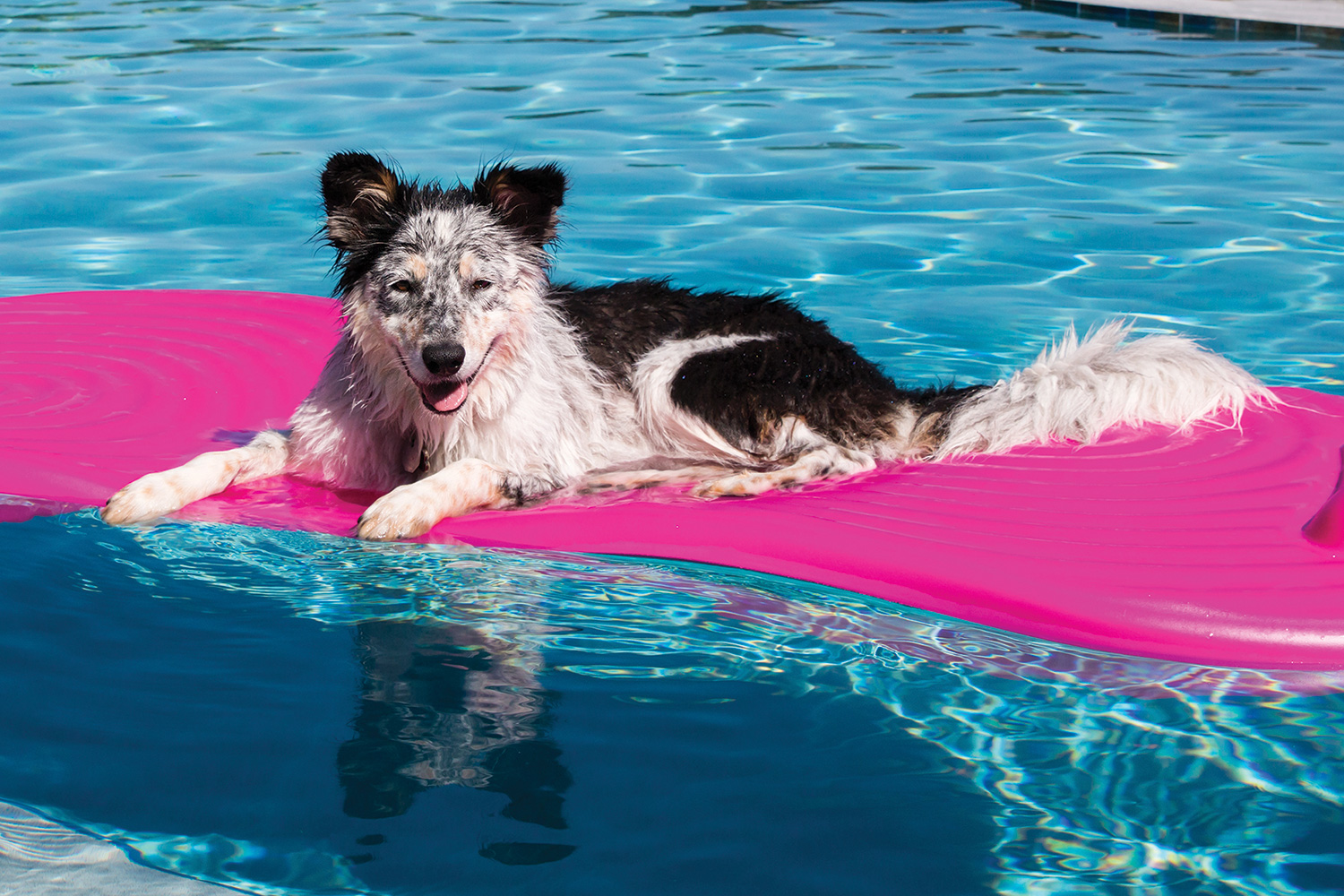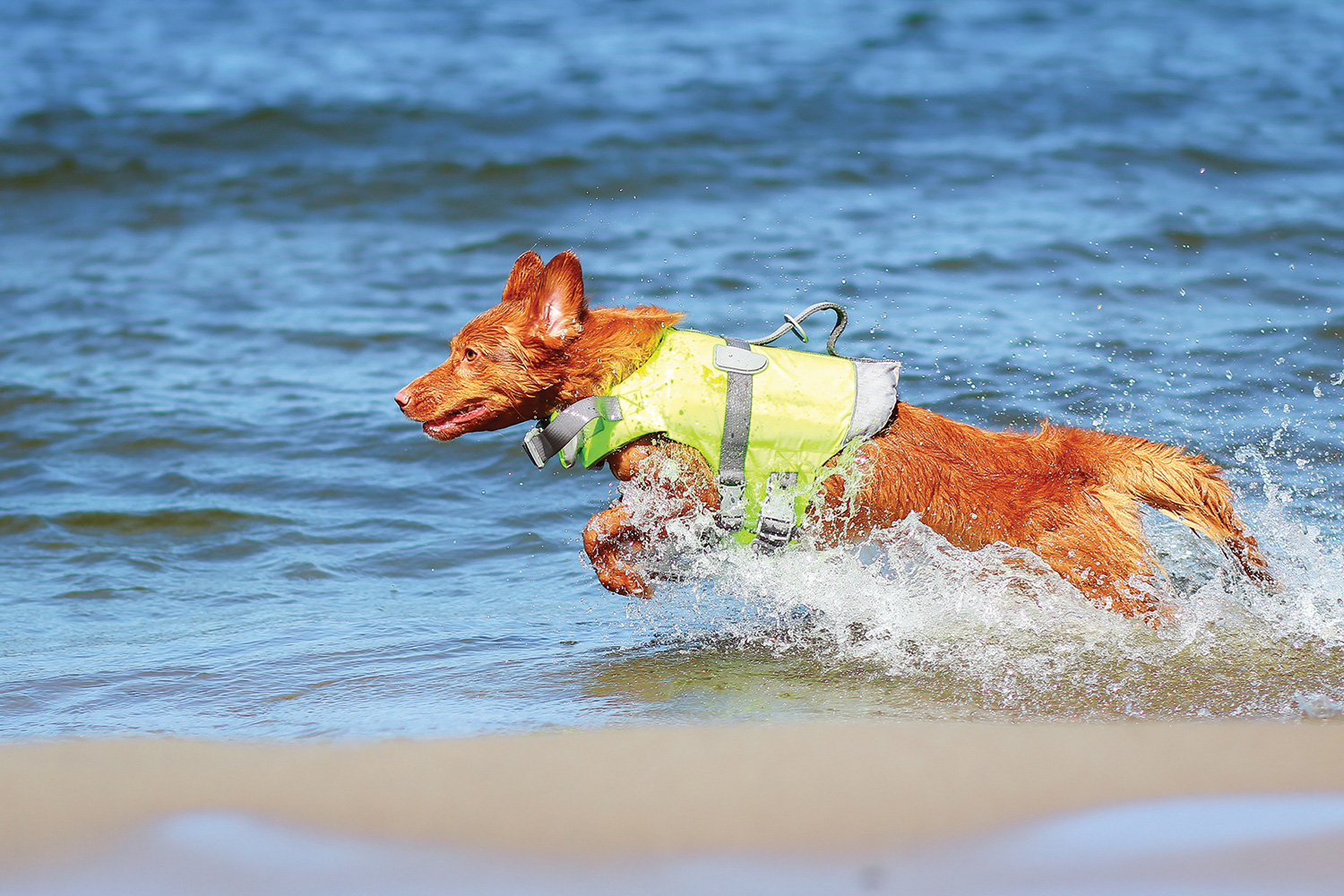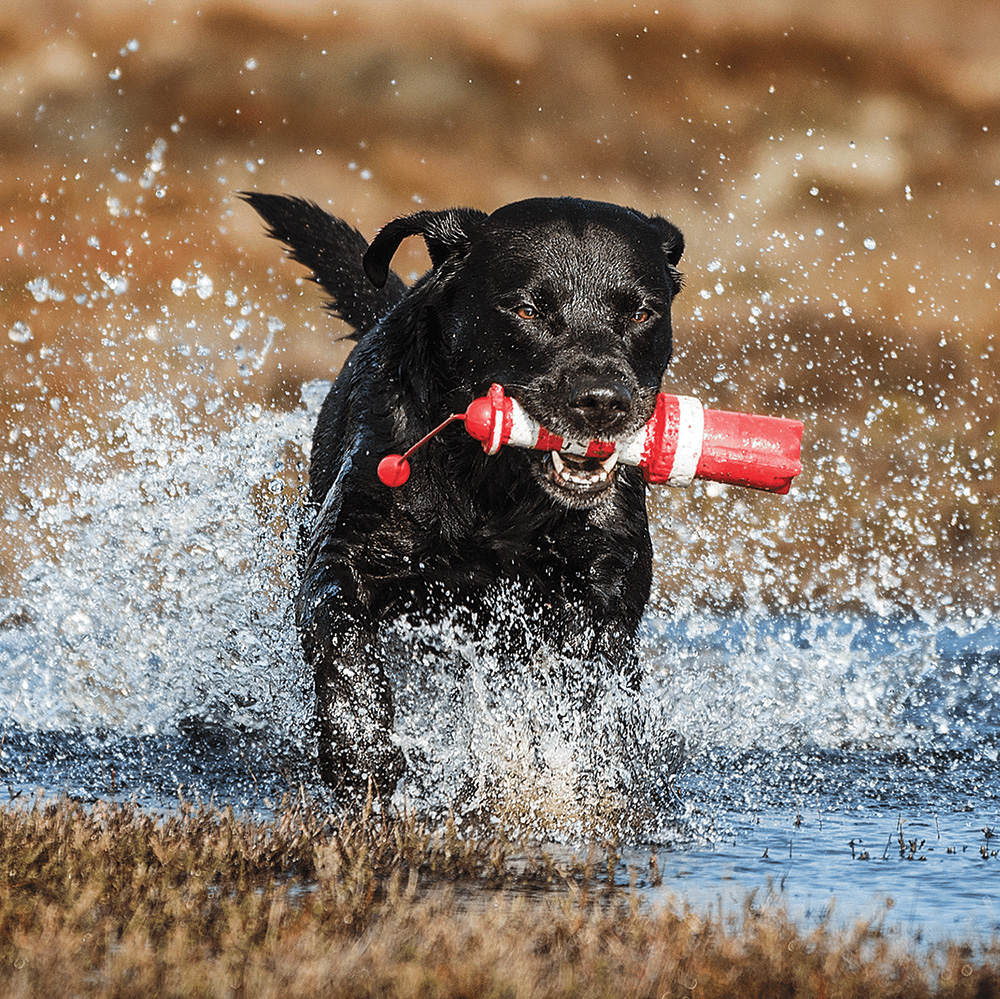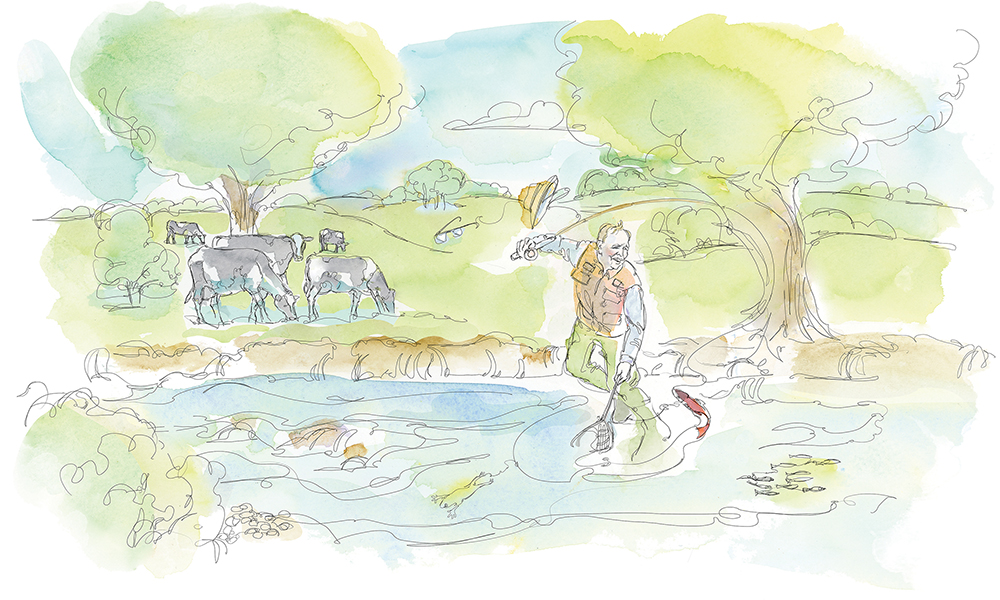Water can be a blast for pets, but consider the risks before taking them poolside, boating or to the cottage.
by Dianne Rinehart //
My dog Daisy is part husky and part German shepherd. Those breeds aren’t known as big swimmers. But tell that to her. She’s never met a body of water she doesn’t want to jump into—winter or summer.
So, I’m always on high alert to make sure she doesn’t get in over her head, so to speak.
But I didn’t consider how fast she was—when I was walking her off-leash along the Pretty River this spring when the water was peaking with runoff and the current was strong.
My phone rang, and for a nanosecond I was distracted. When I looked up, she was in the water being carried downstream, front paws clawing the air, fighting desperately to keep her head above water.
Holy moly!
She was going so fast downstream, I knew I couldn’t swim to her, and I also knew rescue attempts by dog owners often end tragically, when they don’t make it to their dogs—or back to shore.
Instead, I raced along the bank, yelling my encouragement to her. Finally, she gained control, swam to shore, shook off—then immediately got distracted by a squirrel, while I collapsed.
You get the point. Water is dangerous for dogs—and their owners.
There are dog ramps you can train your pet to use to climb out of the pool and floating pads that they can rest on if they get into trouble.
Indeed, one widely circulated statistic estimates that thousands of pets drown in backyard pools every year, which explains why pet safety equipment is a booming business.
There are dog ramps you can train your pet to use to climb out of the pool (dogs can’t generally climb a ladder) and floating pads that they can rest on if they get into trouble.
And you can always put a flotation device on your dog whenever it is around a pool.
A bigger investment is a safety cover, which is tied onto the surrounding deck. These are not the same as tarps and solar covers which have gaps that animals can slip through and drown.
And, of course, there are gated fences, which even have alarms if your canine figures out how to unlatch them.
If the pool dangers aren’t chilling enough, dogs also drown when they fall off docks and boats.
Jacquie Pankatz, a veterinarian and founder of Mountain Vista Veterinary Hospital in Collingwood, remembers a time when she was on the water and heard a plea over the VHF radio for boaters to watch out for a puppy who had fallen overboard.
“He did not have a life-jacket,” says Pankatz, “and the people on board didn’t notice he was missing until it was too late—very sad.”
So, what to do to protect your dog?
Think safety for your dog, like you would for kids.
First remember, says Pankatz, that not all dogs are natural swimmers. It is especially difficult for breeds like bulldogs. Their heavy heads make it hard for them to keep their heads above water and their squished-up snouts make it harder for them to breathe without taking water in.
Regardless of the breed, the first thing is to introduce them slowly to swimming. They will naturally start to do a dog paddle when their feet leave the bottom, says Pankatz, but they won’t know immediately to lift their hind end and float along, so lift it up until they get the idea.
You can also enroll your pet in a learn to swim program. Mountain Vista runs a program for puppies in their hydrotherapy pool.
And even if dogs know how to swim, they should be wearing a good flotation device whenever they’re around water, just like kids. Remember, like people, dogs can cramp up, says Isaac Cuff, of Global Pet Foods, whose Collingwood store sells a variety of floating water toys. And older dogs can’t swim for as long as they once did.
Choose a flotation device that is bright with reflective strips—so you can easily spot your dog—and has a sturdy handle at the top so you can scoop him back up to safety. Be sure it fits your dog snugly. It might even have a flotation pad that sits under the dog’s chin to keep its head above water.
But once your dog is suited up, enjoy the water.
Collingwood’s Nancy Wychers used to kayak along the Collingwood waterfront with her dog, Rosko. When she tipped, she just grabbed him by the handle of his flotation device and placed him back in the boat.
“To keep Rosko from squirming, I kept him between my thighs and paddled,” she says.
“It was fun to be out on the water and have a buddy!”
Toys to Make Water Fun
Once you’ve got your safety bases covered, it’s time to have some water fun! Dogs love to play fetch in the water. My friend Paul Williams’ dog Sadie even loves to dive for stones that are thrown off to her side. But why not go all out? Pet stores carry a wide array of floating toys in bright neon colours. Here are some to consider at Global Pet Foods:
- A Jolly Soccer Ball that is soft enough for the dog to grip in its jaws.
- Project Hive’s wild berry aroma-infused disc.
- A Chuckit! Flying Squirrel.
- RuffDawg’s “solid rubber indestructible” floating dog toy.
- And the very cute upright floating lighthouse from Rogz.
Other Water-Related Problems
Here are three more things for dog owners to watch out for around water, from Mountain Vista’s veterinarian Jacquie Pankatz:
Hot spots: These are skin infections that Pankatz says can spread like wildfire if your pet’s coat does not dry between swims. They become very red and painful. Treatment requires your dog’s fur to be clipped and a topical or oral prescription. To prevent, dry your dog thoroughly after swims and remove its collar, which can trap moisture.
Limber tail: This is a condition that occurs if the dog swims for so long or so rigorously that it strains its tail muscle. “The tail may appear flaccid or broken and the pet may be reluctant to sit down, or it may experience extreme pain when the tail is touched,” Pankatz says. See a vet to make sure it isn’t a fracture or spinal disc disease, then give your dog rest and pet-appropriate pain medications, she advises.
Blue-green algae: Watch out for this toxic algae, which can be fatal if ingested. Call your vet or the Pet Poison Helpline (1-855-764-7661) if you think your pet has ingested the algae. “Better yet, if the water looks like something you wouldn’t swim in or drink, keep your pet away,” says Pankatz.


















